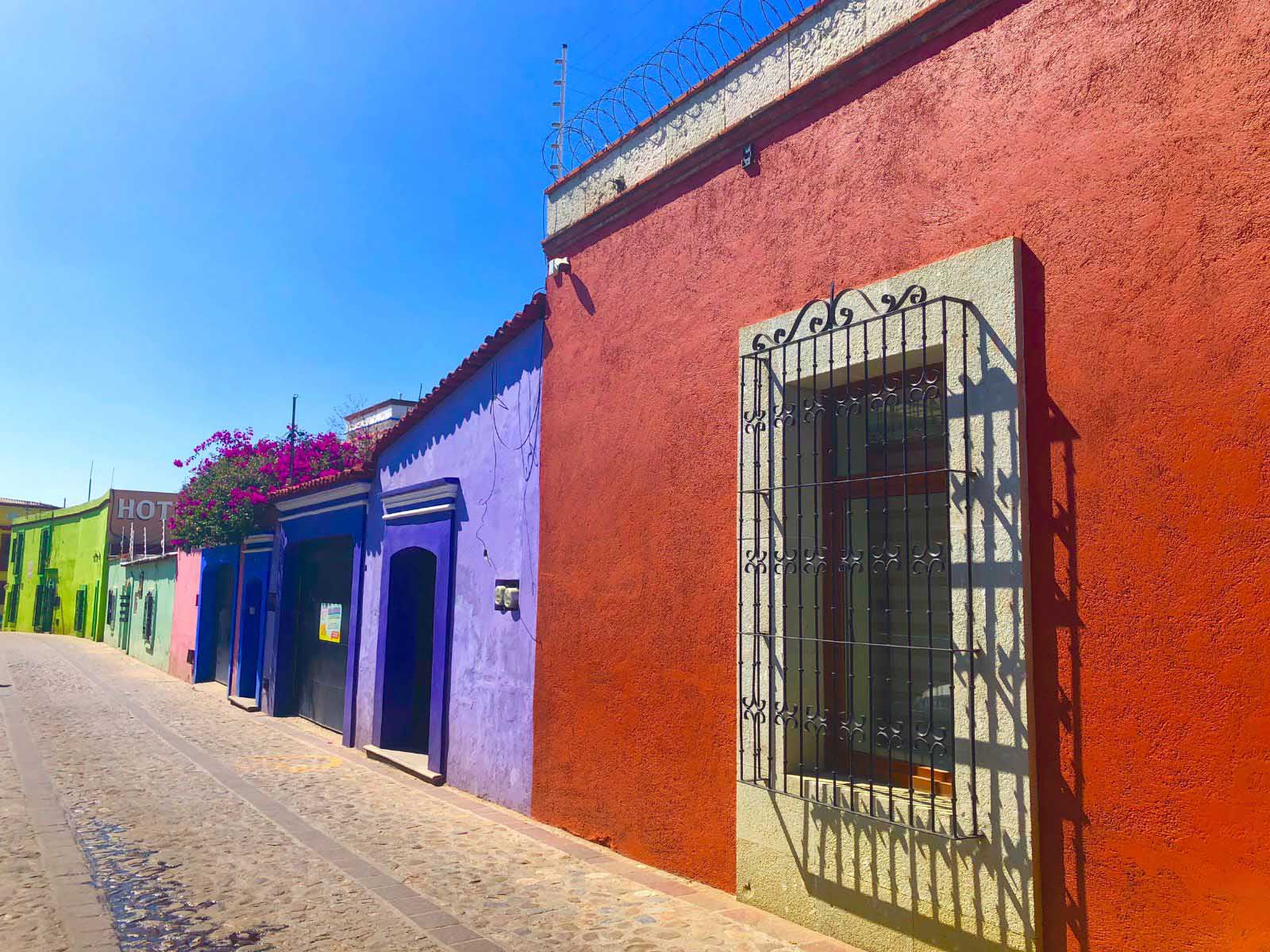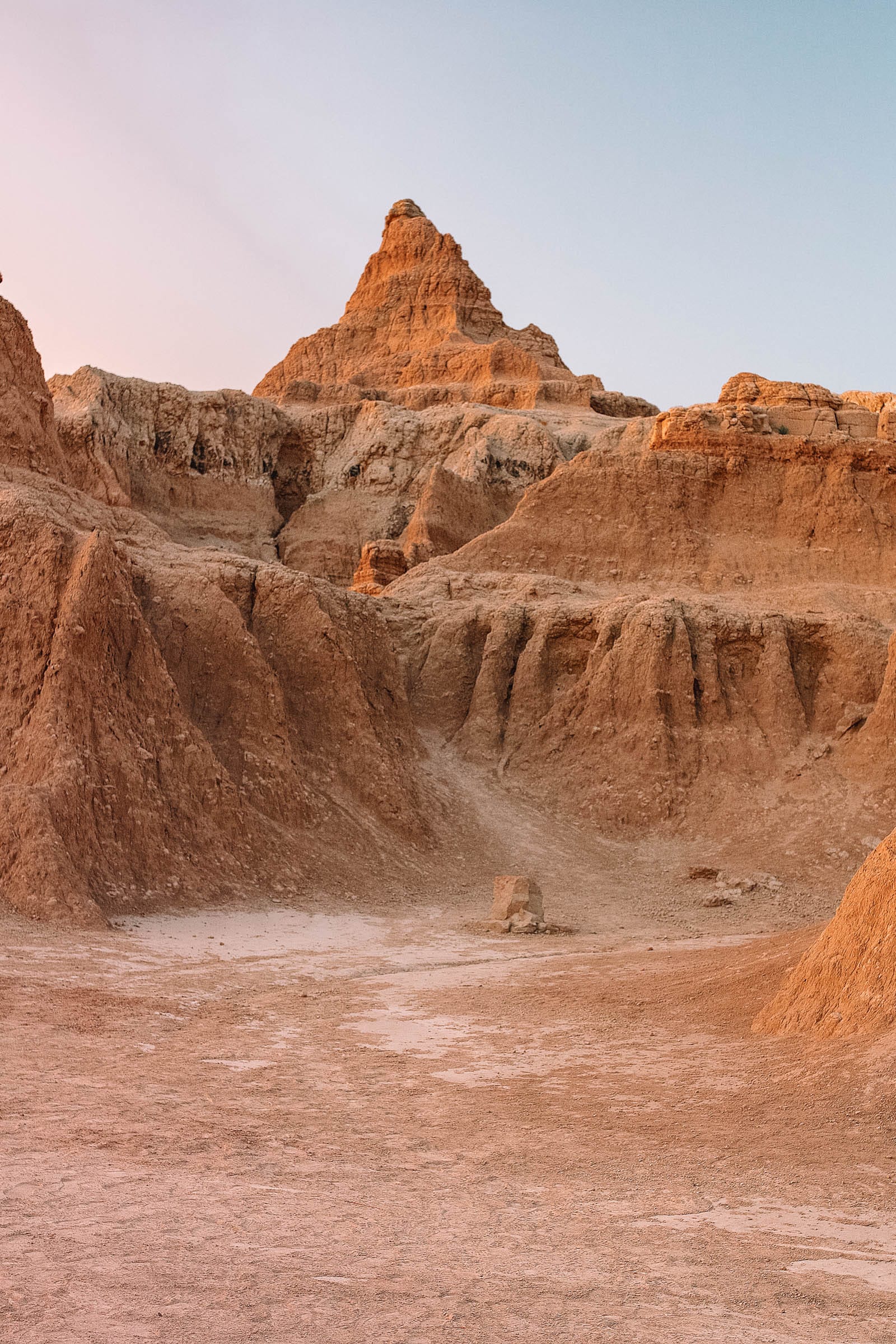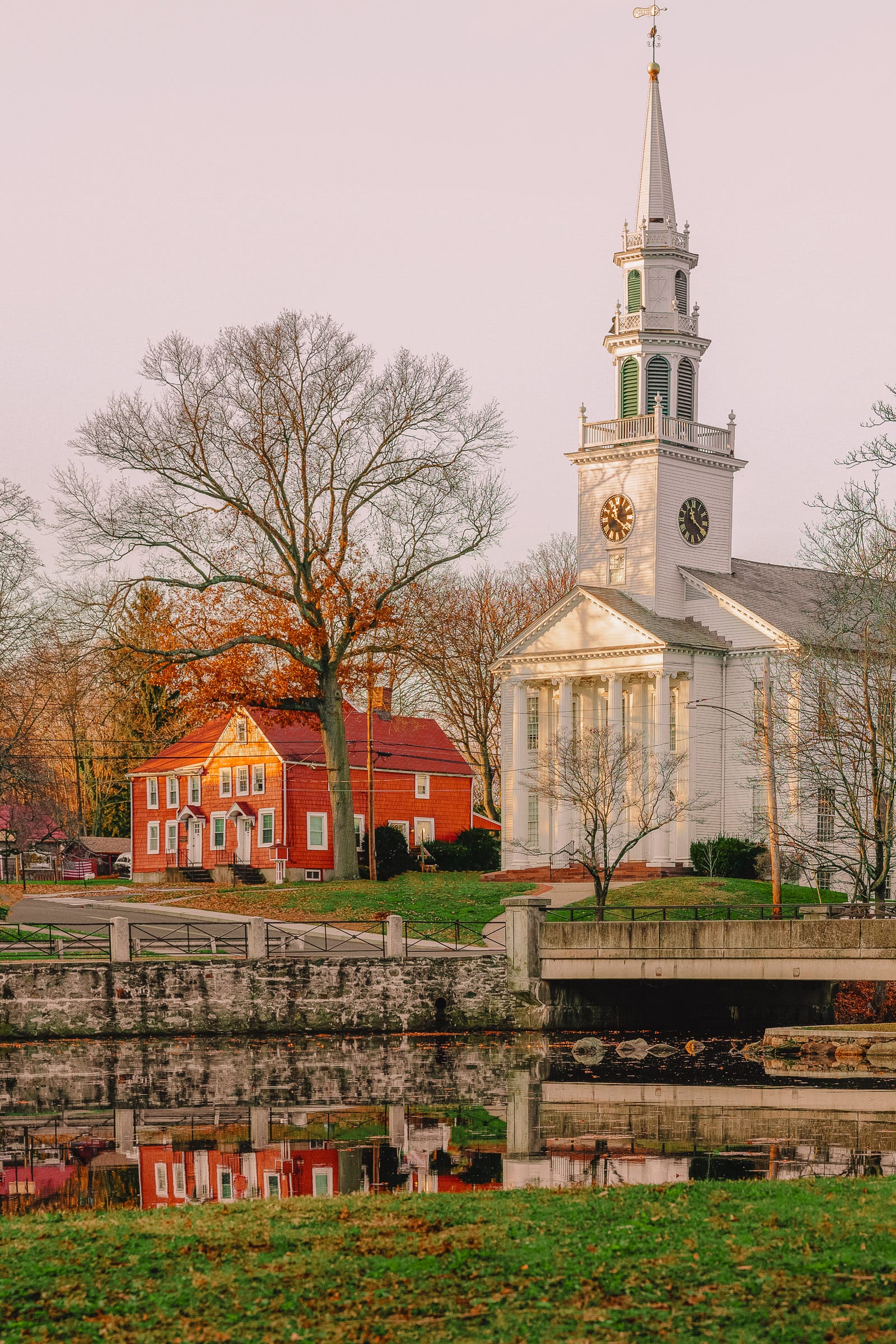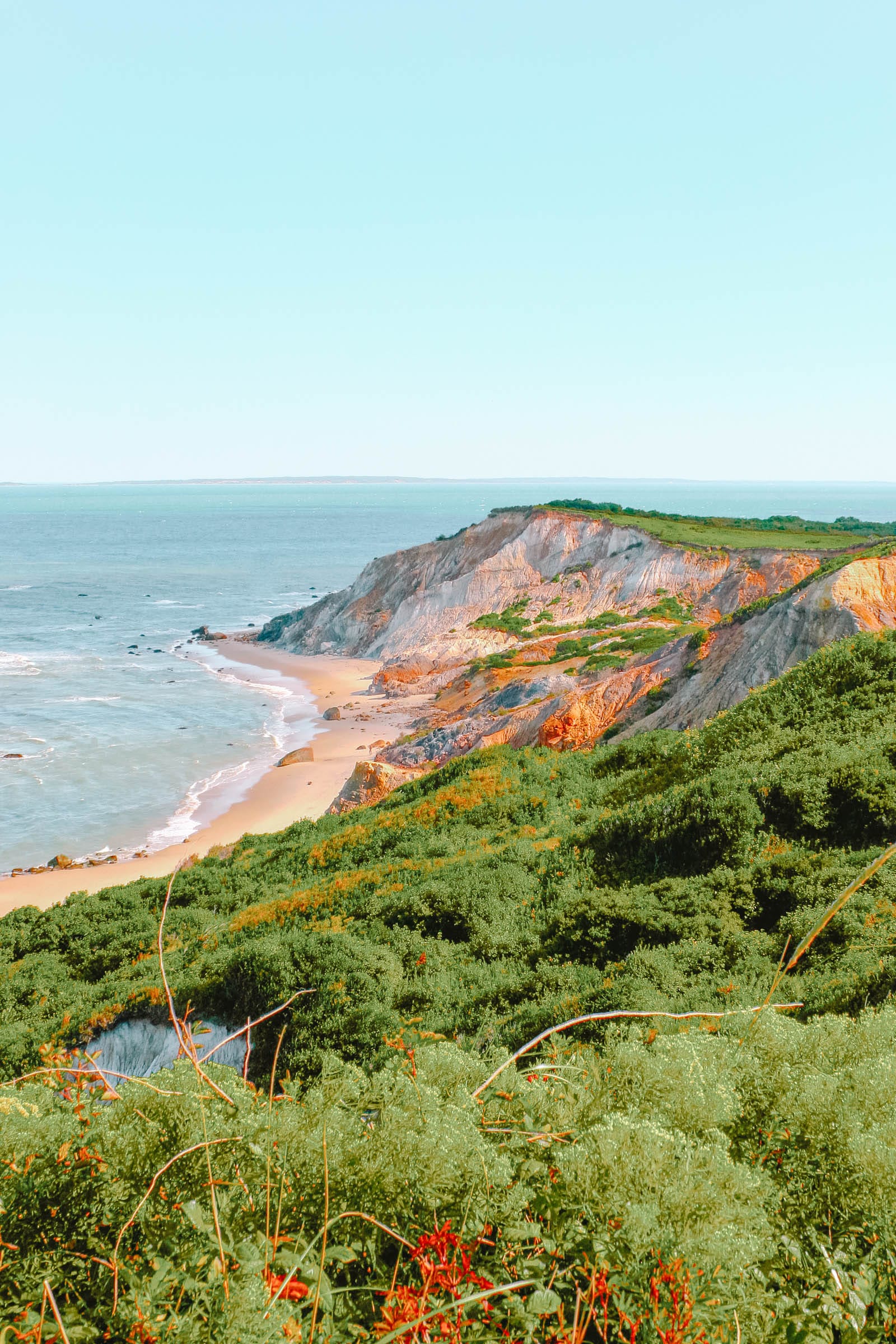Oaxaca City Itinerary Overview
Day 1: Centro Historico & Oaxaca Zocalo
On your first day in Oaxaca City, spend some time getting acquainted with the town’s layout through a Free Walking Tour. This experience will help you navigate Downtown Oaxaca City (Centro Historico) and the Zocalo (Main Town Square), which is a UNESCO World Heritage Site.
Oaxaca City boasts a vibrant street food culture; therefore, be on the lookout for delicious treats such as tlayudas (often referred to as Mexican pizza), quesillo (Oaxaca string cheese), tetelas (triangular-shaped hand pies), tamales oaxaqueños (banana leaf-wrapped tamales), nieves (sorbet), and tejate, a pre-Hispanic chocolate and corn beverage that is particularly refreshing on a hot Oaxaca day.
For those who are adventurous foodies, trying chapulines (pronounced chap-pull-leen-es) is a must. These small grasshoppers are available by the kilo and are perfect for snacking throughout the day, similar to popcorn or nuts.
If chapulines don’t appeal to you, head to Mercado 20 de Noviembre, which combines a market and a food hall, offering a variety of delicious non-insect options to sample while doing some shopping.
After indulging in local flavors, make your way to the Zocalo (Town Square) to admire the Catedral Metropolitana de Oaxaca (Oaxaca Cathedral), the largest church in the city. Plaza de la Constitución (Constitution Plaza) surrounding the cathedral offers a relaxing spot perfect for people-watching.
Next, don’t miss the Templo de Santo Domingo de Guzmán, a stunning 16th-century Spanish church featuring Baroque architecture. While you’re there, explore the Casa de la Cultura Oaxaqueña (Oaxaca Culture Museum) and the Jardín Etnobotánico de Oaxaca (Oaxaca City Botanical Gardens).
Note: The botanical garden spans 2.5 acres and showcases Oaxaca’s native flora, housing hundreds of plants and trees. Be sure to visit with a guided tour, available in English a few times a week for $100 MXN ($5 USD) per person by booking in advance.
After your garden visit, stroll down Calle de Macedonia Alcala, a pedestrian-only street in downtown perfect for photos, shopping, and dining. This vibrant area is filled with colorful buildings, art galleries, and delightful eateries.
Your stomach may be grumbling again; hence, try the authentic Oaxacan mole (pronounced moe-lay). Notable restaurants for this dish include Las Quince Letras, Los Danzantes, and Cabuche. While many are familiar with mole negro (black mole), there are seven types to explore, including mole colorado (red mole) and mole verde (green mole).
Day 2: Hierve el Agua & Oaxacan Mezcal
If you’ve ever seen captivating photographs of Oaxaca City, you may recognize Hierve el Agua with its stunning petrified waterfalls and thermal pools. The name translates to “boil the water,” referring to the mineral-rich pools you can soak in, though the water isn’t actually boiling.
Hierve el Agua is located approximately 1.5 hours southeast of Downtown Oaxaca City; it’s advisable to arrive early as they open at 9 am. Expect to spend about four hours enjoying the pools and hiking to the bottom of the petrified waterfall.
The most convenient travel method is by rental car; however, you may also opt for a camioneta (shared pick-up truck) or hire a private taxi driver who will wait for you while you explore.
As one of the top attractions in the Oaxaca area, Hierve el Agua can get quite crowded. To avoid this, aim to arrive right at opening time before the tour buses roll in.
Aside from the thermal pools, the real highlight is the unique illusion of waterfalls, produced as mineral-laden water trickled over the cliffs over the centuries. Though seemingly cascading, these “waterfalls” are actually formations created by mineral deposits.
You can view both a smaller and a larger waterfall; however, the latter requires a hike down a relatively easy 1.6-mile (2.5 km) loop trail, taking about 1.5 hours.
Once you complete the hike, the mineral pools offer the perfect opportunity to soak and rejuvenate your muscles in the healing waters.
After your relaxing experience, return to Oaxaca City and prepare for a delightful evening. As Mexico’s mezcal capital, you must sample some local varieties. Mezcaloteca serves as both a mezcal school and tasting room, where you can learn about and try some of the finest artisanal mezcal in town.
To end your day on a high note, indulge in a nice dinner to sample more of Oaxaca’s culinary delights. For an elevated dining experience, consider Casa Oaxaca; reservations for rooftop tables are highly recommended.
Day 3: Mitla & More
Your third day in Oaxaca takes you to the Mitla pueblo mágico (magic town). This title is awarded to small towns that showcase significant historical, cultural, and natural beauty.
San Pablo Villa de Mitla, commonly referred to as just Mitla, is renowned for its pre-Hispanic ruins. Unique among archaeological sites in Mexico, the Mitla temples are characterized by shorter heights adorned with intricate stone carvings and vibrant geometric designs.
Mitla, derived from the Nahuatl word “mictlán,” meaning “a place of the dead,” served as a holy burial site for various ancient Mexican civilizations. Only nobility and clergy were allowed burials in this revered location.
Mitla ruins are about an hour’s drive south of Oaxaca City. Allow at least three hours to explore the ruins and the town itself before returning to Oaxaca City, making interesting stops along the way.
Your first stop can be El Rey de Matatlan, a mezcal distillery offering an insightful tour of the mezcal production process, from agave harvesting to distillation. At the conclusion of the tour, samples of mezcal await, and you can purchase a bottle or two.
Next, visit Teotitlan del Valle, an artisan town known for its exquisite tapetes (hand-woven Zapotec rugs). Many local artisans welcome visitors for tours, demonstrating the weaving process. Each rug is unique, and several artisans provide shipping options for your purchases.
Your final stop is the pueblo of Santa María del Tule, famous for the impressive Arbol del Tule. This 2,000-year-old Montezuma cypress holds the record for the largest tree trunk globally, measuring 46 feet in diameter (14 m) and requiring around 30 adults joining hands to encircle it entirely.
Day 4: Monte Alban Ruins & Artisan Villages
Oaxaca is home to three UNESCO World Heritage Sites: the Prehistoric Caves of Yagul and Mitla, Tehuacán-Cuicatlán Valley, and the Historic Center of Oaxaca along with the Archaeological Site of Monte Alban. This itinerary highlights two of these gems.
Monte Alban stands as the most significant ancient ruin in Oaxaca, situated just a 30-minute drive from downtown. Aim to arrive early to avoid crowds and warm midday temperatures.
These ruins are perched atop a mountain, providing minimal shade. Therefore, plan at least three hours for your visit to explore the structures and pyramids. The higher vantage points offer stunning views of the valleys below, including Oaxaca City.
After exploring Monte Alban, venture to the nearby artisan towns to find authentic souvenirs crafted by local artisans. One such destination is San Bartolo Coyotepec, known for its distinctive barro negro (black pottery). The art of crafting black pottery originated in the 1950s with Doña Rosa, whose techniques helped put this village on the artistic map.
Lastly, don’t miss San Martin Tilcajete, the whimsical home of Oaxacan alebrijes (pronounced al-lay-bree-hays), colorful hand-carved wooden figures symbolizing spirit guides. The concept of alebrijes was introduced by artist Pedro Linares, and you can observe their creation in local shops.
Oaxaca City Travel: Frequently Asked Questions
Where is Oaxaca City?
Oaxaca City serves as the capital of Oaxaca state in southern Mexico, located about 285 miles (460 km) south of Mexico City, bordered by Chiapas to the east, Guerrero to the west, and Veracruz and Puebla to the north.
Approximately 160 miles (258 km) south, you’ll find the captivating beaches of the Riviera Oaxaqueña, ideal for a longer stay if time permits.
How do I travel to Oaxaca City?
Oaxaca International Airport (code: OAX) is conveniently located just 20-30 minutes by car from downtown with limited international direct flights available. Connecting flights are most commonly found through major cities like Mexico City and Guadalajara. Alternatively, the ADO bus offers luxury-class transportation from Mexico City, with both day and overnight options.
Should I rent a car in Oaxaca?
Renting a car in Oaxaca City provides the most flexible way to explore numerous sites during your four-day itinerary. Various rental options can be found at the Oaxaca Airport for your convenience.
How’s the Oaxaca weather?
Given its desert climate, expect warm, dry days and cooler nights in Oaxaca City. Temperature fluctuations can reach around 20°F (10°C), so packing layers is advisable, including a warm jacket for the evenings.
When is the best time to visit Oaxaca?
Despite being in the desert, Oaxaca experiences heavy rainfall from May to September. October to April offers the driest weather, making it the most ideal time to visit.
Final Thoughts: Your Ultimate Oaxaca Itinerary
Oaxaca City offers a multitude of experiences, making it a fascinating travel destination in Mexico. During your four-day itinerary, you can cover an impressive range of sights and tastes, making it a rewarding getaway.
While public transport is available, it may not be the most efficient option; hence, renting a car or considering local tours upon arrival can significantly enhance your experience.
What aspects of this Oaxaca itinerary intrigued you the most? Share your thoughts in the comments below!




